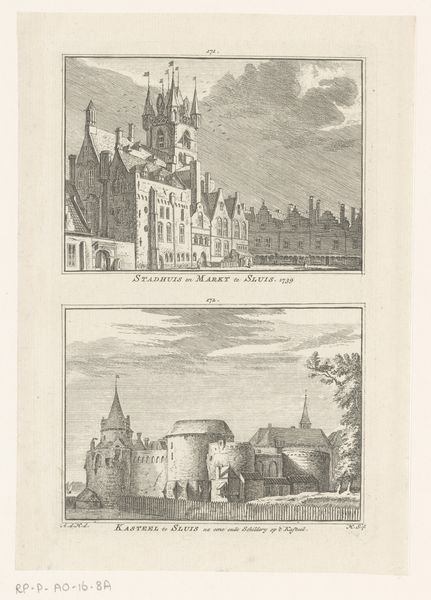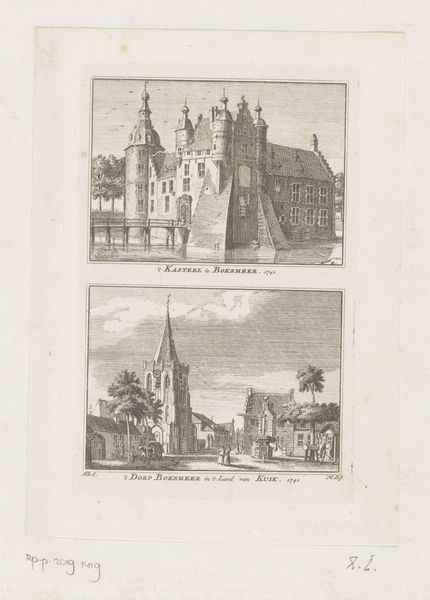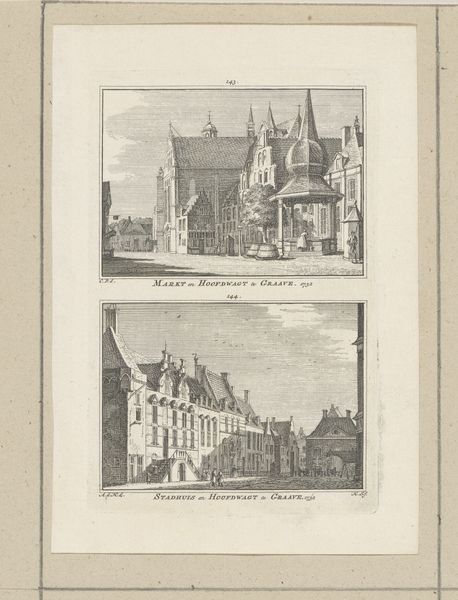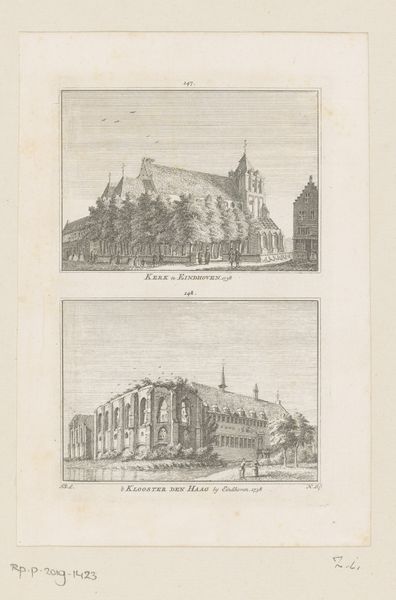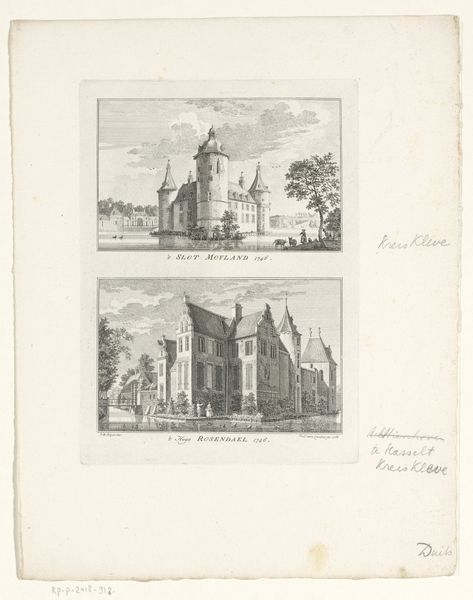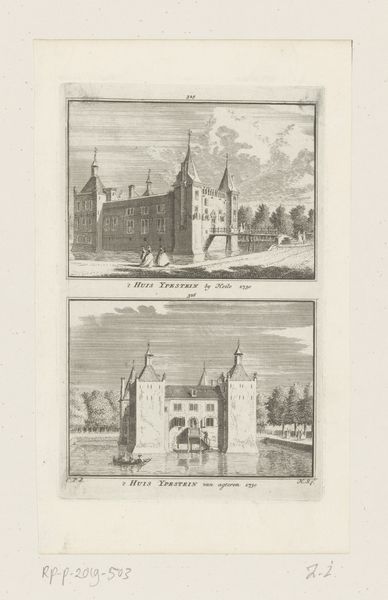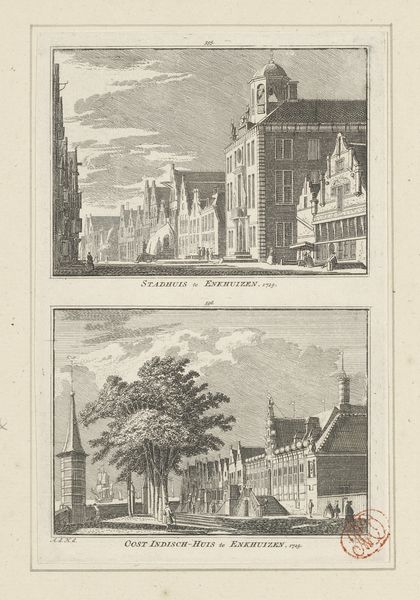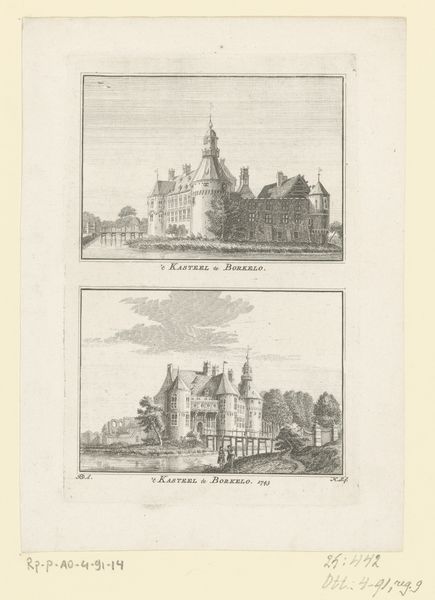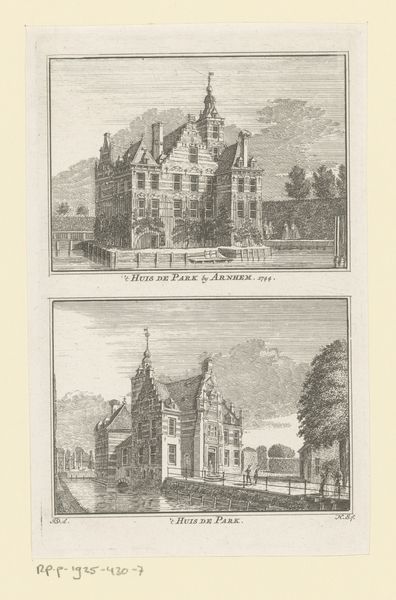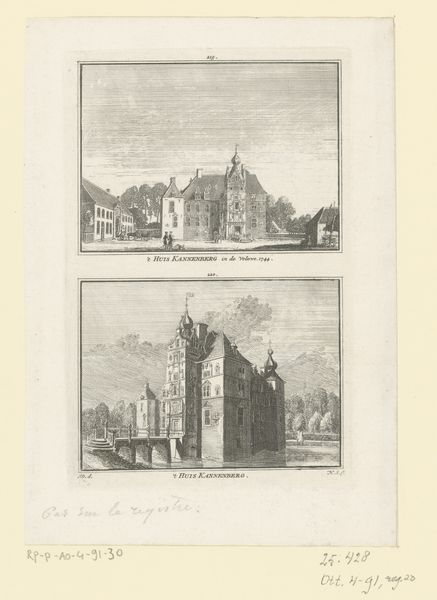
Gezicht op de Onze-Lieve-Vrouwebasiliek en de Sint-Nicolaaskerk en gezicht op het stadhuis en de Sint-Matthiaskerk, te Maastricht, 1740 1746 - 1792
0:00
0:00
hendrikspilman
Rijksmuseum
Dimensions: height 166 mm, width 111 mm
Copyright: Rijks Museum: Open Domain
Hendrik Spilman etched these views of Maastricht in 1740, capturing the Onze-Lieve-Vrouwebasiliek, the Sint-Nicolaaskerk, the Stadhuis, and the Sint-Matthiaskerk. Dominating each scene, the churches with their towering spires serve as potent symbols of spiritual aspiration and communal identity, deeply embedded in the city's ethos. The spire, an architectural motif reaching skyward, echoes the ancient obelisks of Egypt and the minarets of Islam. This reaching towards the heavens transcends cultures, embodying humanity’s yearning for connection with the divine. Think of the Tower of Babel, an archetype of ambition and the quest for understanding the unknowable. Psychologically, the spire can be viewed as a manifestation of the collective desire for transcendence, a reaching beyond earthly bounds. Its presence in Spilman’s Maastricht speaks not just to religious devotion but to a deeper, perhaps subconscious, communal aspiration. These symbols persist, evolving yet retaining echoes of their ancient power.
Comments
No comments
Be the first to comment and join the conversation on the ultimate creative platform.
